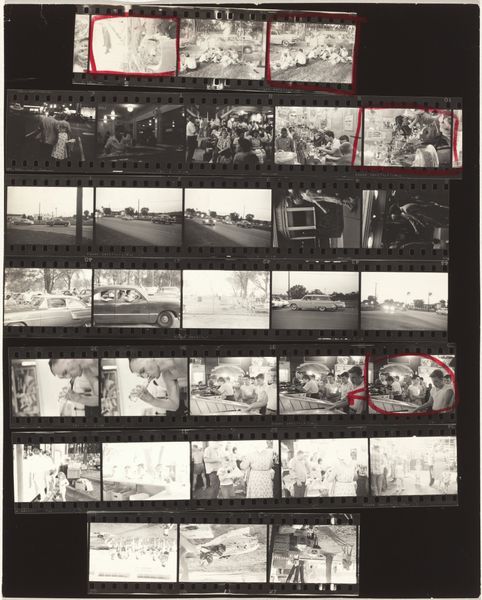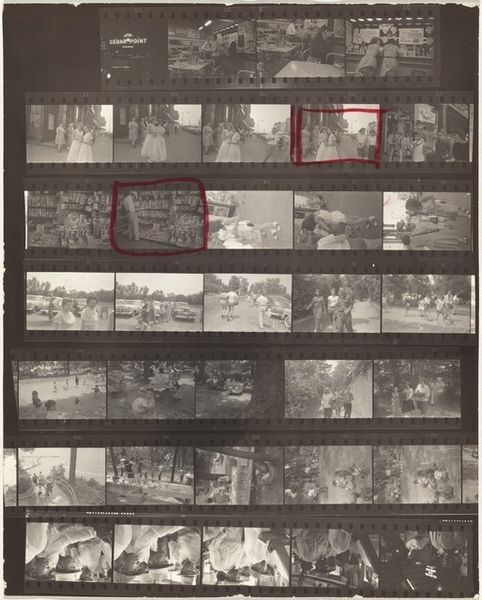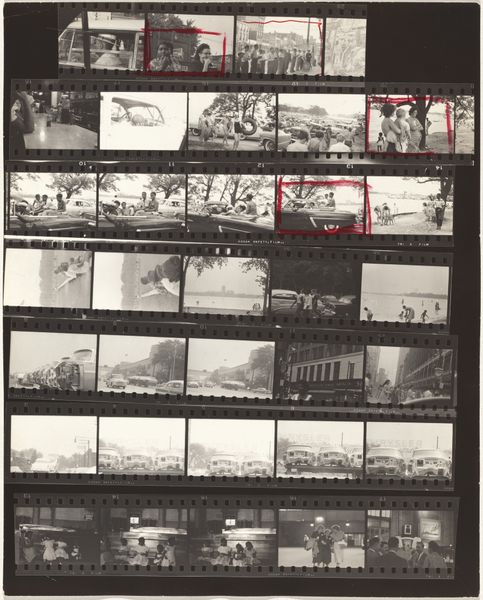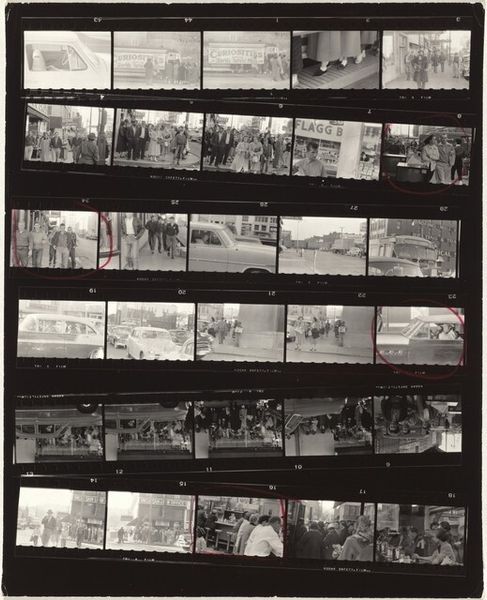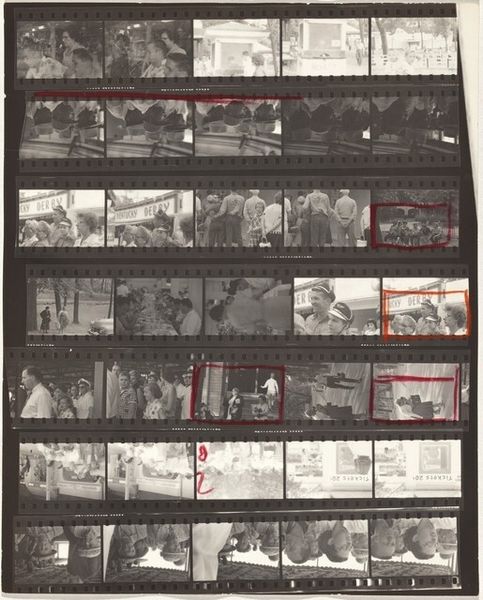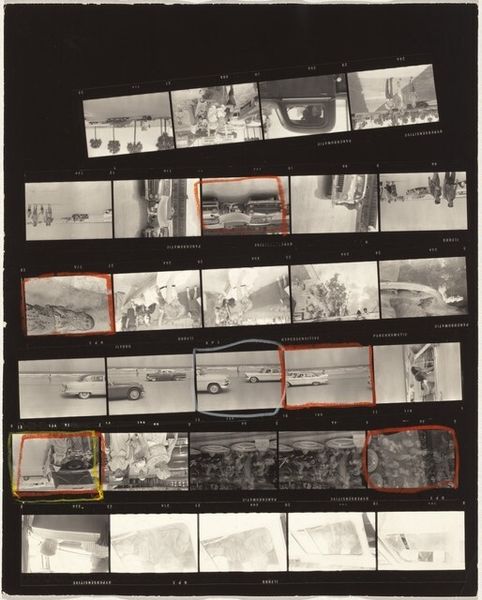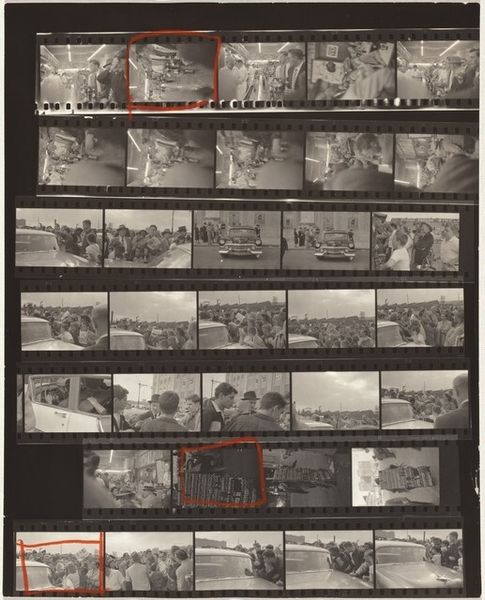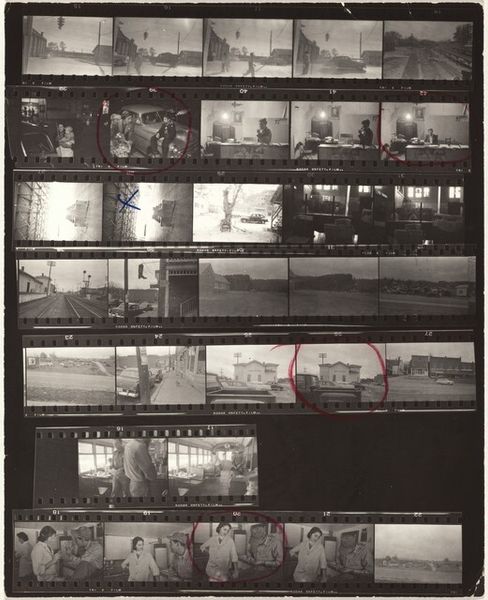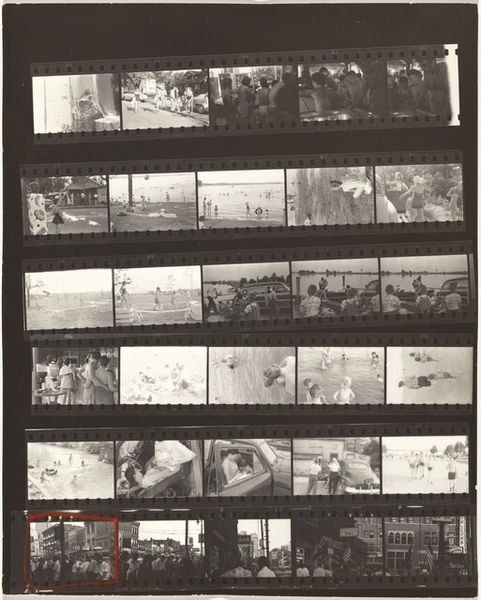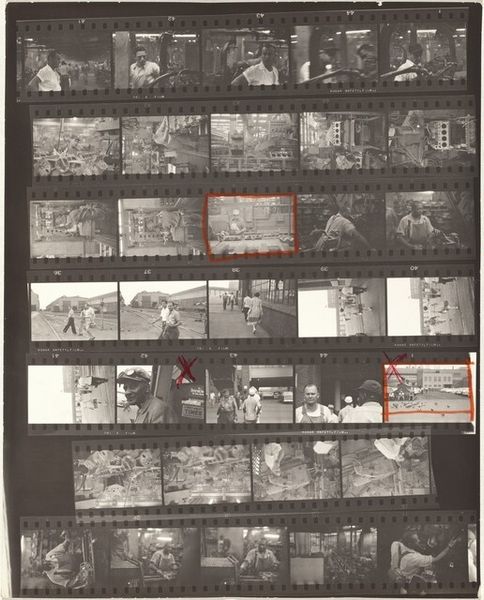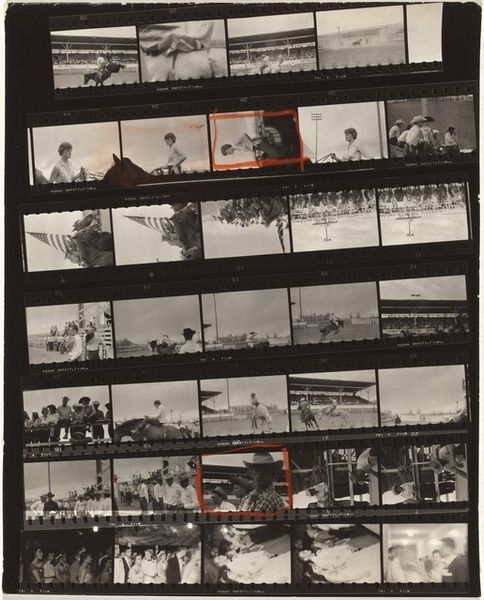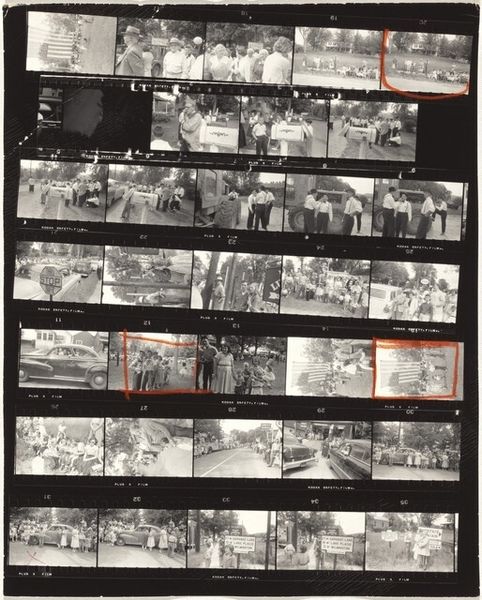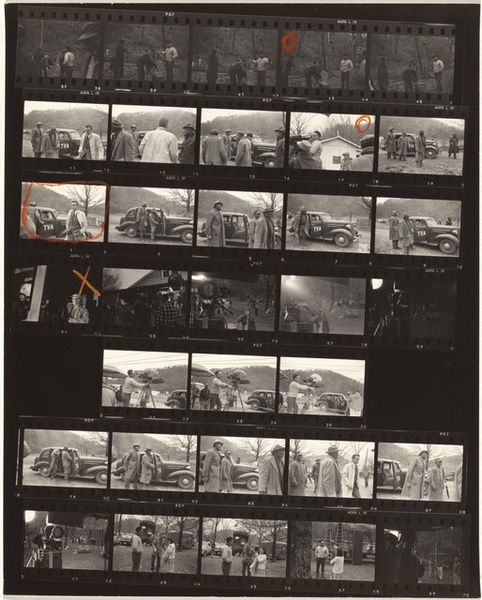
photography, gelatin-silver-print
landscape
street-photography
photography
visual diary
gelatin-silver-print
modernism
Dimensions: overall: 25.3 x 20.3 cm (9 15/16 x 8 in.)
Copyright: National Gallery of Art: CC0 1.0
Editor: Here we have Robert Frank's "Guggenheim 56/Detroit 22--Belle Isle" from 1955, a gelatin silver print showing a contact sheet of various images of what appears to be a summer scene with cars and people. It feels very documentary and unpolished, almost like a casual collection of snapshots. How should we approach reading this work? Curator: We can understand Frank's work through the lens of production and its socioeconomic implications. How does the method of capturing and presenting these images - the use of readily available film, the raw, unedited contact sheet format - challenge established notions of photographic art at the time? Editor: It certainly makes the artistic process more visible. The red markings, the visible sprocket holes - they show the choices the photographer made. Curator: Precisely. And what does that choice – that aesthetic of immediacy – tell us about Frank’s intentions, the audience he was hoping to reach? Consider the implications of him documenting everyday life with modest equipment instead of focusing on grand narratives. Does the automobile featuring so prominently reflect 1950’s American values? Editor: It does feel like it makes the everyday more accessible to a wider audience by employing materials accessible to all. Perhaps the image also tells the story of labor... all the labor in automobile production, for instance. Curator: The very materiality of photography is put on display for mass consumption. By framing a "snapshot" as high art, Frank makes us reconsider the social construction of value and our definition of the 'art object'. What are the impacts when artistic practices blur the line between commodity and aesthetic expression? Editor: I hadn't considered the element of "consumption." This definitely shifted my understanding, I see it as less about personal expression and more about commenting on the process of making and viewing art. Curator: Exactly. We now have a deeper material understanding, linking process, context, and meaning together to view the broader societal narrative.
Comments
No comments
Be the first to comment and join the conversation on the ultimate creative platform.
